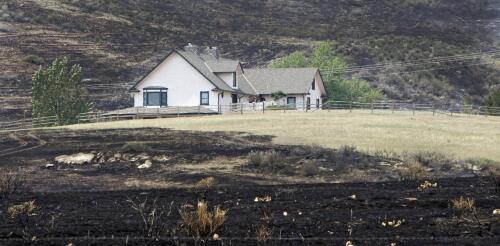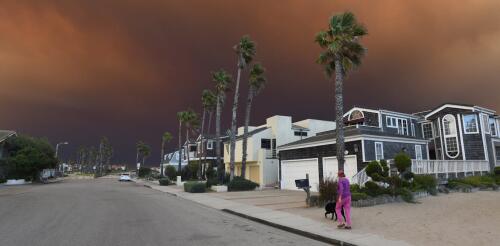Wildfire risk
Extreme heat has already made 2024 a busy wildfire year. More acres had burned by mid-July than in all of 2023, and several communities had lost homes to wildfires. As fire season intensifies across the West, there are steps homeowners can take to make their homes less vulnerable to burning and increase the likelihood that firefighters can protect their property in the event of a wildfire. We research wildfire risk to homes and communities. Here’s what decades of research suggest homeowners in high-fire-risk areas can do to protect their properties. This house near Cle Elum, Wash., survived a 2012 wildfire because of the defensible space around the structure, including a lack of trees and brush close to the house, according to state officials. AP Photo/Elaine Thompson Small improvements make big differences A structure’s flammability depends on both the materials that were used to build...
When wildfires rage, the immediate threat is obvious – but smoke from the fires actually kills far more people than the flames. As fires become more frequent, that smoke is leading to a public health crisis. In a new study published in the journal Science Advances, we found that wildfire smoke likely contributed to more than 52,000 premature deaths across California alone from 2008 to 2018, with an economic impact from the deaths of more than US$430 billion. Previous studies have examined the short-term health risks from wildfire smoke, but few have assessed how exposure to wildfire smoke over years adds up to shorten human lives. Smoke from far-off wildfires turns the skies orange over San Francisco in 2020. Running in wildfire smoke carries harmful particles deep into a person’s lungs. AP Photo/Tony Avelar Wildfire risk and severity have grown as the climate has changed and as more...
A wet winter and spring followed by a hot, dry summer can be a dangerous combination in the Western U.S. The rain fuels bountiful vegetation growth, and when summer heat dries out that vegetation, it can leave grasses and shrubs ready to burn. Drier than normal conditions, like many regions are experiencing in 2024, also raises the fire risk. In years like this, controlled burns and prescribed fire treatments are crucial to help protect communities against wildfires. Well-staffed fire crews ready to respond to blazes are essential, too. The National Oceanic and Atmospheric Administration Climate Prediction Center’s long-range seasonal forecast for summer 2024. NOAA However, on Feb. 8, U.S. Forest Service Chief Randy Moore told agency employees to expect budget cuts from Congress in 2024. His letter was thin on details. However, taken at face value, budget cuts could be interpreted as a reductio...


